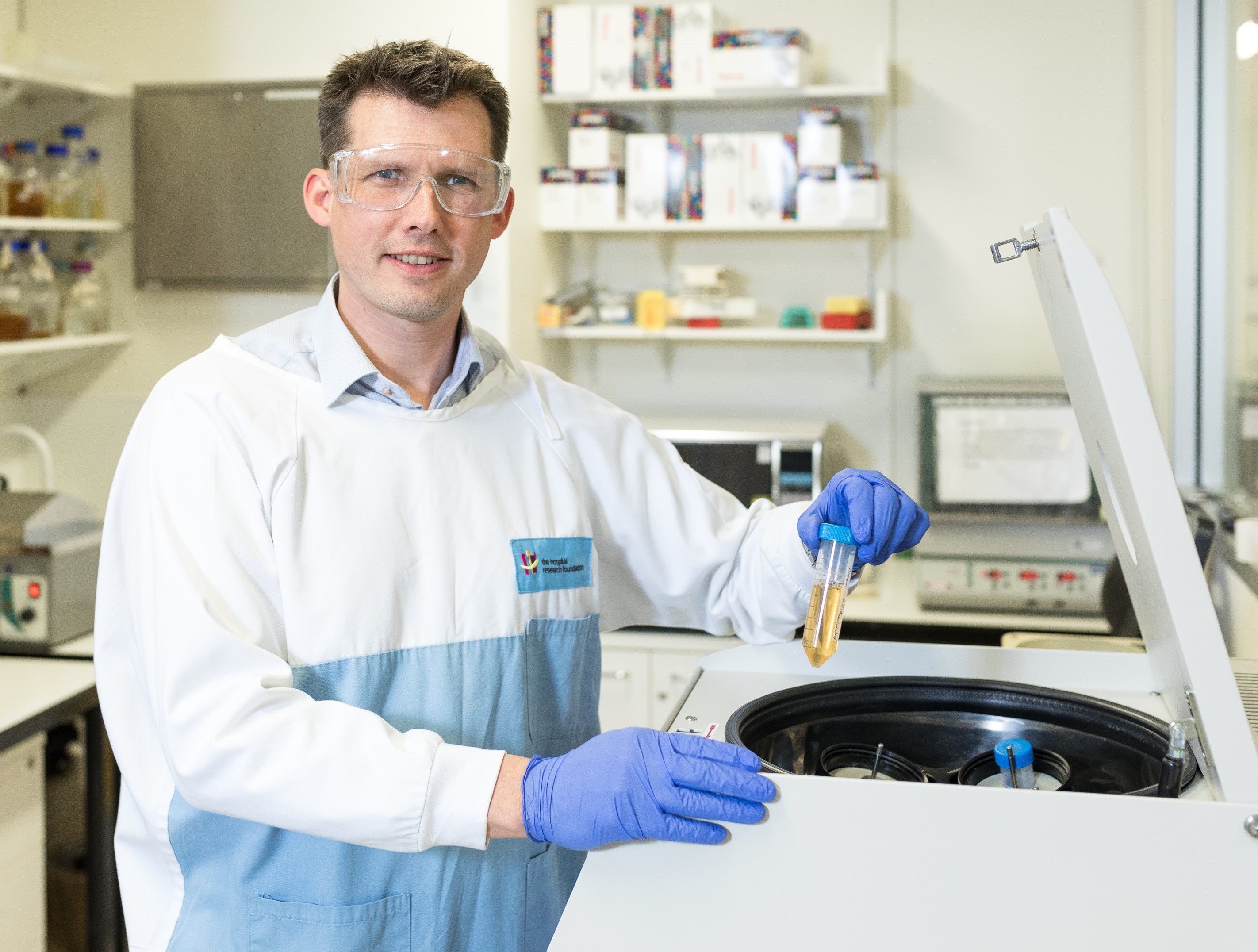Dr Nicky Thomas started his career as a pharmacist. During his PhD, he was investigating how encasing medicine in lipid droplets could improve its efficacy when he was asked: can this lipid technology be used to treat biofilms?
Biofilms are present in our everyday lives. They can grow on plants, on rocks, on our teeth as plaque and on implanted medical devices such as catheters and pacemakers as chronic infections.
This story is part of our 10 of the Best - fourteenth edition. 10 of the Best is an annual NHMRC publication, showcasing 10 NHMRC-funded health and medical research projects. See more 10 of the Best.
'If you don’t brush your teeth for the entire day you can feel a slimy layer forming, that is a biofilm', Dr Thomas explains.

A biofilm consists of a slimy matrix of extracellular substances which allows bacteria and other microorganisms to work together to defend themselves from their environment.1 They are 1000 times more difficult to control than microbes that do not reside in biofilms.2
'The slime is an impenetrable surface, protecting the bacteria from external stress and changes in their environment', Dr Thomas says.
While antibiotics can be used to eliminate individual bacteria in a laboratory test tube, the same technique won’t work on a more complex biofilm because of the protective layer surrounding the bacterial community.3
'Antibiotics are designed using our traditional understanding of bacteria existing as individual units, but bacteria are more likely to exist as biofilms and are therefore more difficult to treat', Dr Thomas says.
But the bacteria in biofilms still need energy to survive – and for that they look to their external surroundings.
With a team of researchers, Dr Thomas developed a Trojan-horse delivery system for antibiotics, using a technique where antibiotics are hidden in tiny particles of food-grade lipids.4
He says the delivery system is like offering a human a French fry: they can’t resist taking a bite.
'If you give the biofilm something that looks like food, the bacteria will start nibbling on that', he says.
The team of researchers found that the Trojan-horse delivery system of antibiotics is significantly more effective in treating wound and lung infections than standard methods of treatment.5,6
Through the Early Career Fellowships funding provided by NHMRC, Dr Thomas was able to visit labs around the world to learn more about biofilms, bringing this knowledge back to Australia. He says he had the chance to stand at the frontier of existing knowledge and is grateful for the opportunity to work with great people.
'I founded the Adelaide Biofilm Testing Facility, a service for researchers to have new medicines tested in specific [biofilm] models that were not available in Australia', Dr Thomas says.
Next steps
Pre-clinical studies have shown this novel treatment disrupts the protective biofilm structure, so antibiotics can work more effectively against bacteria in biofilms. This method results in significant improvement, up to 100-fold, in cystic fibrosis lung infections and wound infections.
More recently, the team have combined Trojan-horse style delivery systems with compounds that harness the antimicrobial action of light and are looking to translate these treatments to the clinic. This will further reduce the likelihood of development of antibiotic resistance towards conventional antibiotics, a key requirement in worldwide efforts to save millions of lives.
1Hall-Stoodley, L., Costerton, J. W., & Stoodley, P. (2004). Bacterial biofilms: from the natural environment to infectious diseases. Nature reviews microbiology, 2(2), 95-108.
2Van Acker, H., Van Dijck, P., & Coenye, T. (2014). Molecular mechanisms of antimicrobial tolerance and resistance in bacterial and fungal biofilms. Trends in microbiology, 22(6), 326-333.
3Smith, A. W. (2005). Biofilms and antibiotic therapy: is there a role for combating bacterial resistance by the use of novel drug delivery systems? Advanced drug delivery reviews, 57(10), 1539-1550.
4Thorn, C. R., Clulow, A. J., Boyd, B. J., Prestidge, C. A., Thomas, N. (2020). Bacterial lipase triggers the release of antibiotics from digestible liquid crystal nanoparticles. Journal of Controlled Release, 319, 168-182.
5Thorn, C. R., de Souza Carvalho-Wodarz, C., Horstmann J. C., Lehr, C. M., Prestidge C. A., Thomas, N. (2020). Tobramycin Liquid Crystal Nanoparticles Eradicate Cystic Fibrosis-Related Pseudomonas aeruginosa Biofilms. SMALL. 17 (24), 202100531.
6Thorn, C. R., Wignall, A., Kopecki, Z., Kral, A., Prestidge C. A., Thomas N. (2022). Liquid Crystal Nanoparticles Enhance Tobramycin Efficacy in a Murine Model of Pseudomonas aeruginosa Biofilm Wound Infection. ACS Infectious Diseases 8 (4). 841-854.